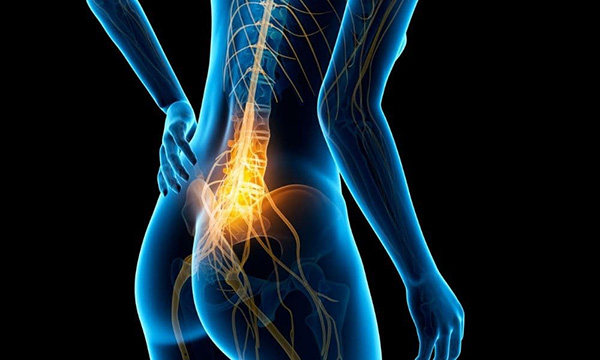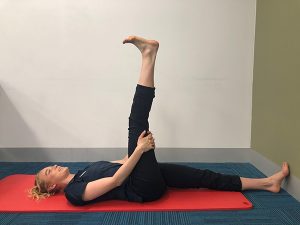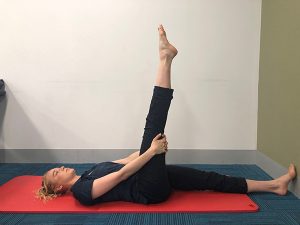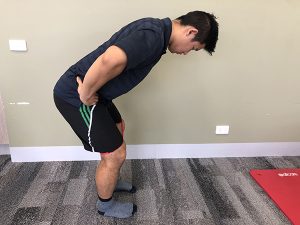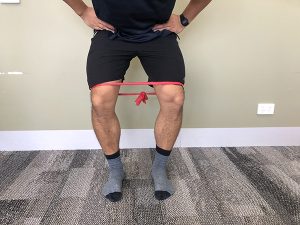Take Control of Your Sciatica!
In this article, we’ll tell you how to take control of your sciatica! The term sciatica is often used by people who experience sharp shooting pain down the back of the leg. However, there can be numerous other causes or injuries that can happen within that area of the body that can produce similar symptoms. Therefore, if you read this article, you will better understand sciatica, differentiate it from other injuries, and know how best to manage it.
What is Sciatica?
Sciatica describes pain felt along the sciatic nerve, which runs from your lower back, down through the buttock, hamstrings and into the lower leg. The sciatic nerve is the longest nerve in the body. The spinal sections it originates from include L4, L5 or S1.
Sciatica is commonly misdiagnosed, which can result in either slow or non-responsive treatment. Leg pain can have various sources. It can be a local leg injury or it may even be referred from your lower back. The main nerve that travels from your lower back to your leg is your sciatic nerve. Irritation or pinching of your sciatic nerve can cause severe leg pain known as sciatica.
What Are the Causes of Sciatica?
Pressure on the sciatic nerve from a herniated disc usually causes sciatica. Otherwise joint inflammation, compression of the nerve from bony arthritic growths or a locked facet joint in the lower spine can commonly cause sciatica.
Leg pain can have various sources. Pain can be a local leg injury or it may even be referred from your lower back and travel along the sciatic nerve. The main nerve that travels from your lower back to your leg is your sciatic nerve.
While there are numerous causes of sciatica, the most common are:
- Lumbar herniated discs
- Spinal degeneration
- Facet joint injuries
Other sources include:
- Piriformis syndrome
- Spinal stenosis
- Spondylolisthesis
- Sacroiliac dysfunction
What Are the Symptoms?
Sciatica causes pain that usually begins in the lower back and spreads through the buttock, leg, calf and occasionally the foot. The pain can vary between dull, aching or burning sensations and sharp, shooting pains. Sciatica can also cause tingling, numbness or muscle weakness in the affected leg.
One or more of the following sensations may occur because of Sciatica:
- Pain in the buttock or leg that is worse when sitting
- Burning or tingling in the leg
- Weakness, numbness or difficulty moving the leg or foot
- Constant pain in the calf
- Shooting pain that makes it difficult to stand up.
How is Sciatica Diagnosed?
Sciatica is a clinical diagnosis based on your symptom description, the behaviour of your pain and a physical examination.
While the diagnosis of sciatica can be simple, the primary cause of your sciatica may require further investigations to eliminate or confirm its site.
Your physiotherapist will perform a thorough examination that will consist some of the following tests:
- Range of movement
- Sensation and reflexes of your lower limbs
- Areas and intensity of pain
- Functional capacity
- Strength
- Muscle flexibility and joint mobility of your spine and lower limbs
They will also want to know specific details such as your previous injury history and any recent changes in your routine, activity and general health.
Your physiotherapist or doctor may send you for imagining to check for problems in the spinal vertebrae that may be irritating or compressing your sciatic nerve. Most cases of sciatica affect the L5 or S1 nerve roots.
How Is It Treated?
PHASE 1 – Pain Relief & Protection
Getting your pain under control is the first point of call. There are a few simple steps that you can start with to manage your pain.
- Remain active and try and continue as much of your normal daily routine as possible.
- Continue to work and perform activities that you enjoy if possible.
- Minimise your time sitting. Stand and walk as much as possible.
- Take pain relief and anti-inflammatories from the guidance of a medical practitioner such as a pharmacist or your GP.
- Visit your physiotherapist to receive specific exercises, treatment and a management plan.
PHASE 2 – Restoring Normal Flexibility, Posture & Strength
As you get your symptoms under control, your physiotherapist will turn their attention to restoring range of motion, strength and flexibility
Your physiotherapy treatment may include the following;
- Lower limb stretching
- Core strengthening
- Neural stretching and mobility
- Manual therapy
- Soft tissue therapy
- Strength and conditioning and gym exercises
- Cardiovascular fitness
Swimming and hydrotherapy exercises are beneficial in early injury repair due to a lower body weight due to the buoyancy of water. This allows more movement without causing pain.
PHASE 3 – Restoring Full Function & Dynamic Control
The next stage of your rehabilitation is aimed at returning you to your desired activities and goals. Everyone has different demands and this will determine what specific treatment goals you need to achieve. Your physiotherapist is the best person to guide your rehabilitation. This may include functional exercises, graded return to sports training and improving your load tolerance.
PHASE 4 – Preventing a Recurrence
Sciatica does have a tendency to return. The main reason it is thought to recur is due to insufficient rehabilitation.
Fine-tuning your back mobility and core control and learning self-management techniques will ultimately help you to achieve your goal of safely returning to your previous sporting or leisure activities without sciatica.
Exercise is like cleaning your teeth. Exercise prevents problems.
Contact your physiotherapist if sciatica pain grows worse over a few days, or if it begins to interfere significantly with your daily activities. If you have been living with sciatic, it can now be the time to put a stop to it with the right guidance and treatment. Contact your physiotherapist or seek some medical advice from your general practitioner.
References
https://www.physio-pedia.com/Sciatica
https://www.spine-health.com/conditions/sciatica/physical-therapy-and-exercise-sciatica
https://caringmedical.com/prolotherapy-news/sciatica-treatmen
https://spireortho.com.sg/medical-conditions/back-pain/
